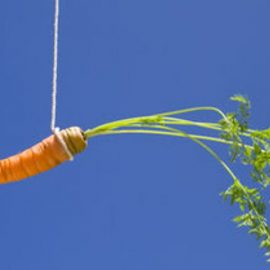

This article is an excerpt from the Shortform book guide to "Discipline Equals Freedom" by Jocko Willink. Shortform has the world's best summaries and analyses of books you should be reading.
Like this article? Sign up for a free trial here.
What is self-discipline? Do you know how to develop self-discipline?
Self-discipline is a steady, internal force that drives you to take action and “be better.” In Discipline Equals Freedom, Jocko Willink explains that motivation or discipline from someone else is a temporary influence that’s unreliable and outside your control.
Here’s how to develop self-discipline and keep up consistent willpower.
How to Cultivate Discipline
In order to learn how to develop self-discipline, it’s important to establish reasons for it. Willink explains how his own underlying drives have pushed him to keep improving throughout his life. Similarly, you’ll lay the foundation for your discipline by identifying your drive. After you identify your reason to be a better person, the next step will be deciding how you’re going to achieve this by establishing a concrete, long-term goal and progressing toward it incrementally.
1. Identify What Drives You
The first step to developing self-discipline is to find a reason why you should strive to improve. In the military, Willink felt driven to make himself—and his team—better than their enemy. As he pushed himself to improve, he envisioned the enemy preparing in the same way. So, he’d work hard to stay ahead. After leaving the military, he found another reason to push himself to improve: to honor the men who died fighting.
To adopt Willink’s approach, think about the people or goals that drive you. Maybe you want to improve for your family, honor a lost loved one, fulfill your potential, or all of these.
(Shortform note: To find an effective “why,” don’t base it on expectations, public approval, or guilt. Instead, choose something that feels truly meaningful to you.)
2. Establish a Long-Term Goal
Once you’ve identified why you want to improve, decide how you’re going to do it. Willink advises setting a long-term goal and keeping it in focus. Orienting yourself with the big picture will prevent you from losing your way in the day-to-day journey. For example, write your goal on your mirror or use a picture that represents your goal as the lock screen background on your phone.
(Shortform note: The author emphasizes the importance of setting long-term goals but doesn’t offer any detailed advice about how to do this. Goals! explains a few criteria to consider when setting your goals: Make sure your goals are clear, measurable, challenging, aligned with your values, and have deadlines to inspire urgency.)
3. Improve Yourself Incrementally
Willink’s third step to developing self-discipline is to work toward your long-term goals by improving yourself incrementally:
On a daily basis, Willink urges you to do things that make you better and bring you closer to your long-term goals rather than choosing things that sidetrack you, for instance by providing instant gratification. For example, by getting up early and completing your workout instead of sleeping in, you’ll maintain your discipline and get closer to your long-term health goal. You’ll also benefit yourself in the short term because you’ll feel confident and energized for the day ahead.
(Shortform note: As a reminder to base your daily decisions on your long-term goals, try writing your goals before your day begins and again before bed. You could even write out a plan that breaks your long-term goal into concrete, daily steps to keep you on track. For example, the 12 Week Year explains how to outline a plan that’s specific, measurable, pushes your limits, and keeps you accountable.)
Don’t compare your progress to other people’s. Willink notes that it’s easy to get intimidated by the success of others. Realize that there’ll always be people better than you at any given thing. Instead of being discouraged by this, let others’ greatness inspire you tobe the best version of yourself.
To become the best version of yourself, Willink says you should strive to be better than you were yesterday. (Shortform note: Though the author doesn’t explain how to do this, one way is to set incremental personal goals that increase in difficulty over the previous day, month, or year. For example, if you want to run a marathon (a long-term goal) make a training schedule that begins with a manageable distance and then lengthen it a bit each week so that you’re continually pushing yourself.)
Don’t compromise your discipline on little things. Just like our process of improvement, regression usually happens slowly and in small increments. This makes it harder to notice lost progress. However, Willink points out that every little slip is a conscious decision. So, pay attention to your temptations and only rarely allow them. Willink admits he occasionally succumbs to the temptation of a mint chocolate chip milkshake (though he suggests doing this only after you’ve already maintained a disciplined lifestyle for a while).
(Shortform note: Willink’s regimen of near total deprivation from our unhealthy desires might be interpreted as extreme. After all, what about the age-old wisdom, “everything in moderation”? Scientific literature on nutritional health suggests that when it comes to diets, people are poor judges of moderation. In other words, because “moderation” is subjective, we tend to justify eating more of the things we want to eat. So, at least in the case of diets, Willink’s rigidity seems valid.)

———End of Preview———
Like what you just read? Read the rest of the world's best book summary and analysis of Jocko Willink's "Discipline Equals Freedom" at Shortform.
Here's what you'll find in our full Discipline Equals Freedom summary:
- Lessons and the philosophy of discipline from a Navy SEAL
- The importance of daily habits like waking up early and putting off breaks
- How self-sabotage actually stems from laziness






